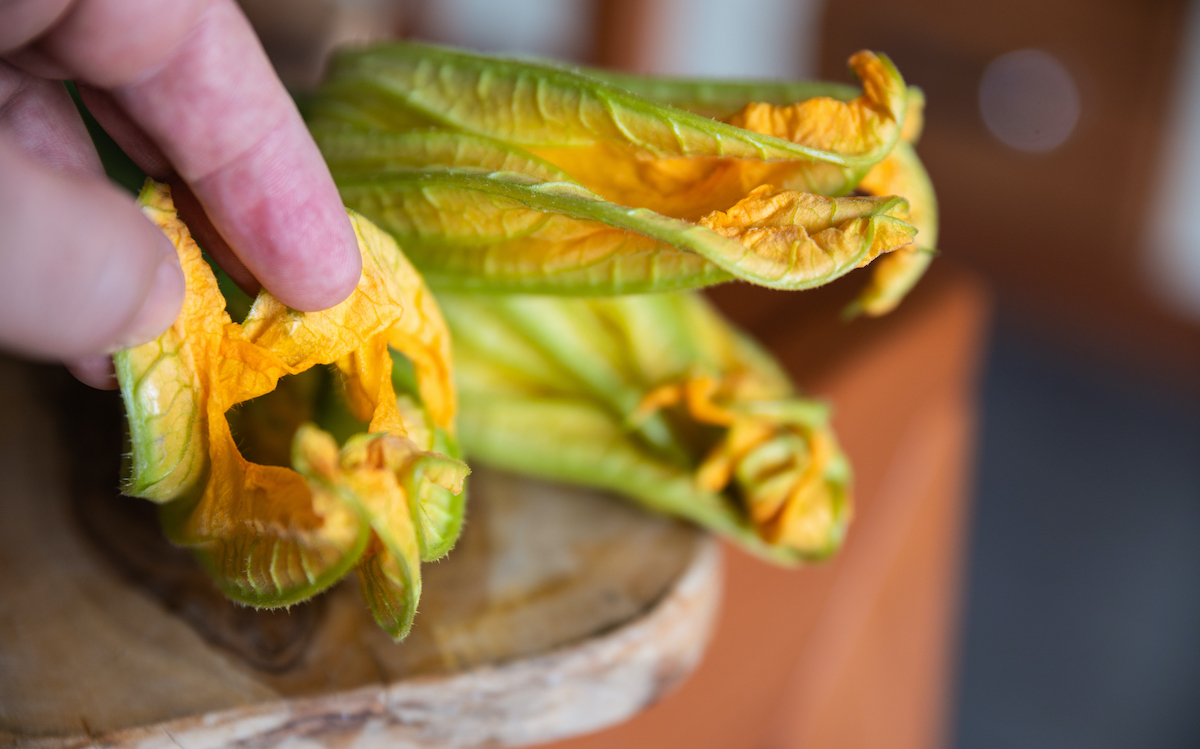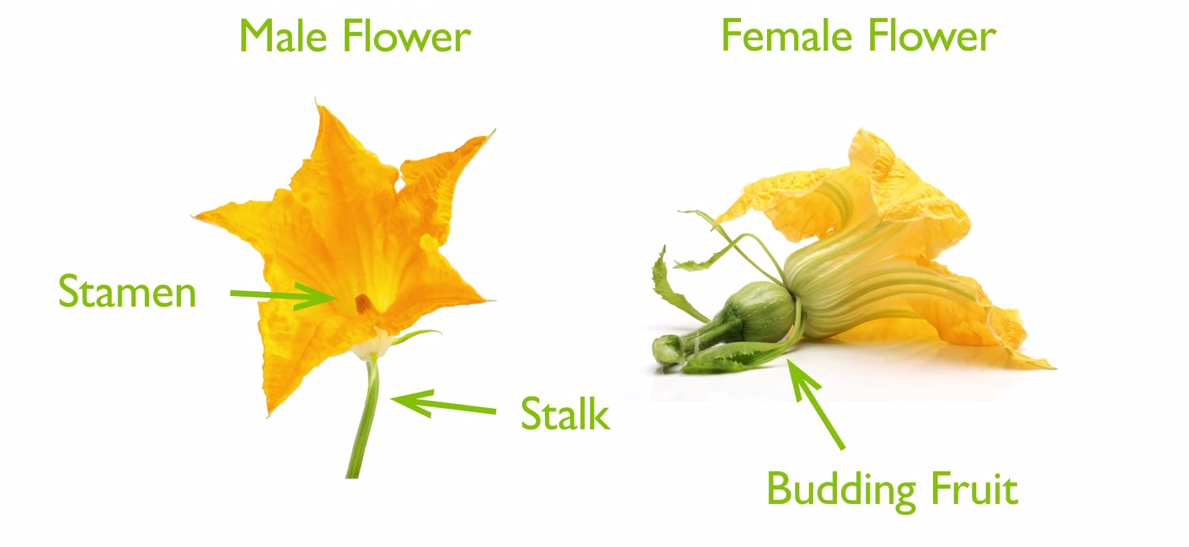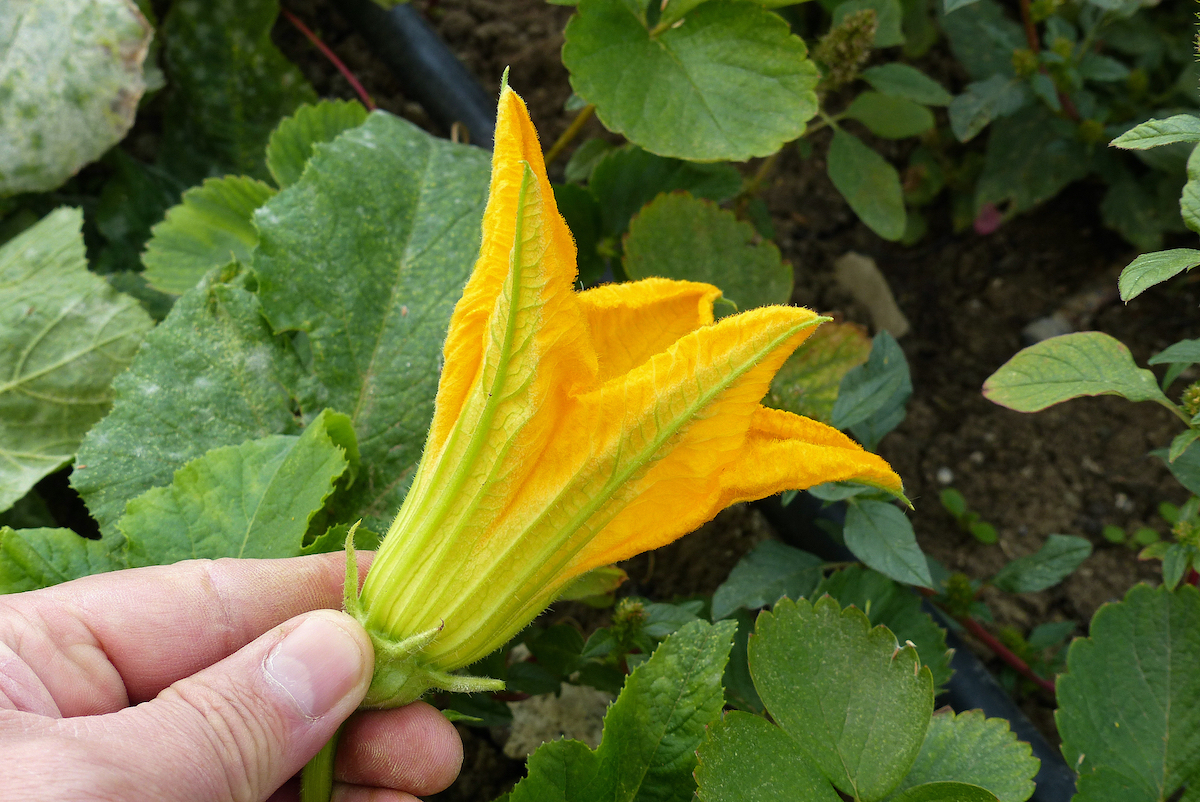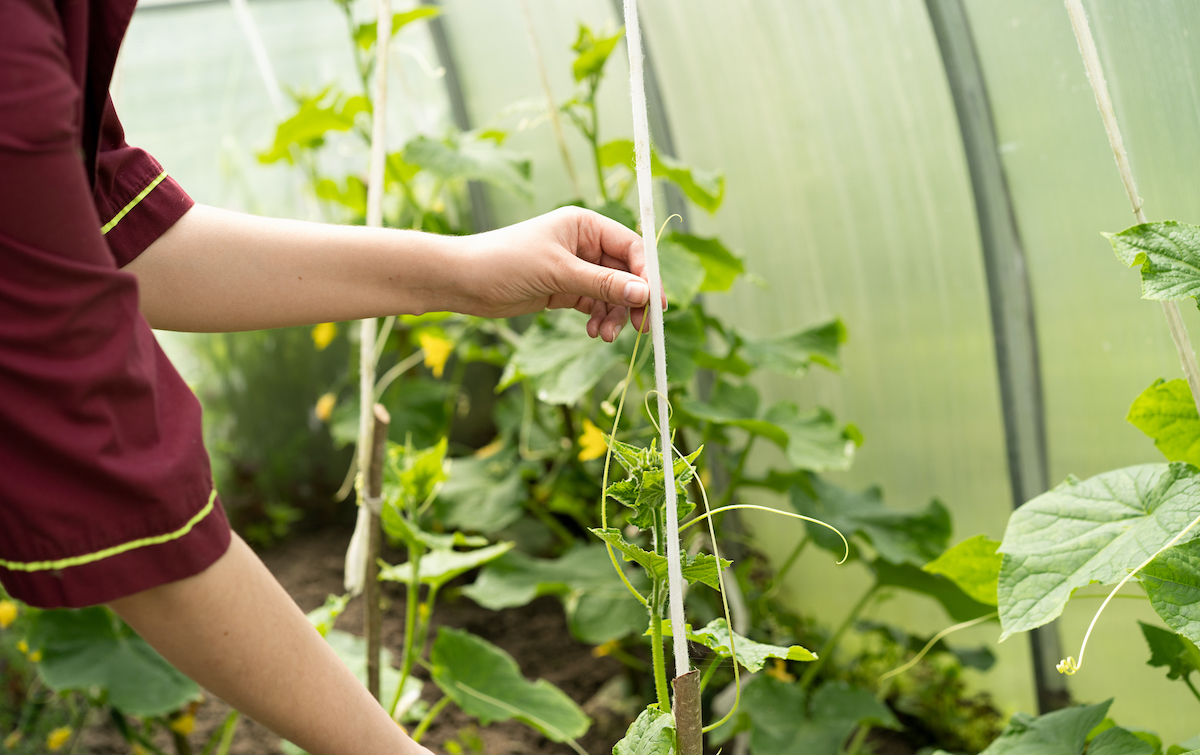

We may earn revenue from the products available on this page and participate in affiliate programs. Learn More ›
With bee populations declining dramatically due to loss of habitat—a 45 percent loss in managed honeybee colonies from 2020 to 2021, according to a survey conducted by the nonprofit Bee Informed Partnership—and other pollinators under attack from pesticide overuse, we might not be able to count on Mother Nature to do as much pollinating as we’d like. We might have to step in and help out using hand-pollination techniques.
If in recent years your backyard garden seems to have produced fewer fruits and vegetables than usual, you might need to hand-pollinate this spring to ensure your plants are able to successfully fruit.
What is pollination?
Pollination is the transfer of pollen from a male flower to a female flower to fertilize the flower and allow the fruit to develop. While many plants require fertilization in order to fruit, some, like peas and beans, do not. Still other plants, such as tomatoes and chilis, are self-pollinating, meaning their flowers have both female and male parts, and they don’t require bees or other pollinators to carry pollen from one flower to another. Some plants require cross-pollination, which means the pollen used to fertilize female flowers must come from another plant.
Who do we have to thank?
Honeybees and bumblebees, of course, are the most renowned pollinators, but there are about 20,000 species of bees on earth, all of which have a role in pollination. Plenty of other insects help out, too: Beetles, butterflies, flies, moths, and wasps move from flower to flower, pollinating as they go, as do ants. In the non-insect category, bats and birds help spread pollen, as well. Finally, humans are often called upon to fertilize flowers via hand-pollination.
Which plants need hand-pollination?
Common backyard vegetable plants that are often in need of pollination help include cantaloupe, cucumber, eggplant, okra, pumpkin, squash, and watermelon. Cucumbers, for example, are not a favorite garden stop for pollinators; their flowers are often passed over in favor of other more appealing ones in the garden.
Is this flower male or female?
Before hand-pollinating, the first thing you have to do is identify the flowers on your plant by gender. In general, male flowers simply extend from the end of a straight stem—a stalk with no swelling. Female flowers, on the other hand, are at the end of a stalk that has a noticeable swelling, something that looks like a slim or simply smaller version of the fruit or vegetable it is destined to become. This swelling behind the flower is known as the ovary.

How to Hand-Pollinate Squash
If you’ve determined that hand-pollination is the best way to fertilize your squash plants so that they will produce fruit, you have a couple of options.
Option 1: Use an instrument such as a very small paintbrush—one like an artist would use—or a cotton swab. Identify a male flower and use the brush or swab to gently scrape off some of the yellow granules (pollen) from the stamen, which is the yellow protuberance in the center of the flower. Access to the stamen should be fairly easy, since squash flowers are generally quite large.
Next, identify a female flower and gently rub the swab or brush against the pistil, or cluster of yellow protuberances in the middle of the flower. Voila! You have hand-pollinated!
Option 2: Simply break off a male flower at the base of its stem, remove the petals, and carry it over to a female flower, where you’ll rub the stamen against the pistil of a female flower.
Plants usually produce more male flowers than female flowers, so it’s likely plenty of male flowers will remain for ongoing pollination efforts.

How to Hand-Pollinate Cucumbers
Because of their smaller flower size, cucumbers are a bit trickier to pollinate, but the hand-pollination process is essentially the same: Take some pollen from a male flower and apply it to a female flower. Patience, however, is required because often all the early flowers on a cucumber are male.
Don’t be dismayed if, on your first trip to the cucumber patch with brush in hand, you fail to see any female flowers; they will come. The male flowers open first to attract pollinators; the female flowers appear about 10 days later. Also note that the ratio of male flowers to female flowers is quite high, though some cuke cultivars are bred to increase the number of female flowers.

Mix it Up
Another use for hand-pollination is to create hybrid fruits, and by extension, plants. Gardeners with some expertise in hybridization can take male pollen from one variety of, say, watermelon, and apply it to the pistil of a different variety of watermelon to meld positive traits of each type of watermelon. As you might guess, attempting to create a hybrid fruit is a scientific endeavor where undesirable cross-pollination must be avoided.
Clean hands and tools are essential. Unopened flowers are carefully opened, and the pollen collected and then applied to flowers that are opened just in time to receive the pollen. The pistil must then be sealed with surgical tape or covered with a bag to prevent contamination.
